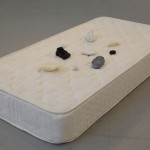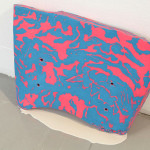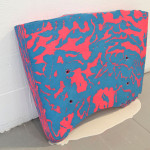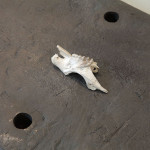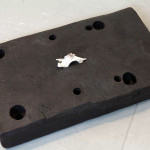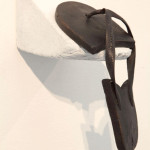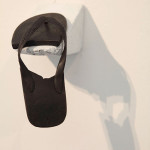Notes 12 December 2013
Rethinking the index as a sign without presence
The trace is not necessarily an indexical sign.
The cinder is not causally linked to an object or event.
These objects are linguistic traces: objects that refer to a past and a future.
The material object as textual productivity: a trace, a ghosting, a gap.
The object functions as a signifier, that is its primary purpose.
The object as signifier moves backwards and forwards, deferring its presence.
The signifier as material form is always in referral to another element that is not present. Différance: the trace of other traces. The object is ‘constituted on the basis of a trace within it of the other elements of the chain or system.’ (Derrida)
The object is productivity that occurs through the transformation and difference to another text.
It is the textualisation of the object that leaves its trace (ghosting) rather than simply its physical representation.
The materiality of the object in this sense is a trace of another material, a deferment to a material that occupies another life.
This process of translation renders redundant any recourse to an original; the original is a figure of language, a mythology.
‘The translation belongs to the afterlife of the original, thus confirming the death of the original.’ (de Man)
The afterlife is in a constant state of deferment—the trace—as the translation is always incomplete, referring to a past and future simultaneously. The object of translation is itself a shadow life.
The theory of the Text conceived as a web of citations, quotes without inverted commas and references cannot provide any form of original.
Thus the death of the original that occurs during translation is in fact a transposition rather than any kind of erasure. A supplement, a trace of a trace.
The idea of an original is in fact a linguistic figure that motivates différance and play; the copy after the copy.
‘The translation is a fragment of a fragment, is breaking the fragment—so the vessel keeps breaking, constantly—and never reconstitutes it; there was no vessel in the first place, or we have no knowledge of this vessel, or no awareness, no access to it, so for all intents and purposes there never has been one.’ (de Man)
The vessel that emerges from the mold is a fragment of a fragment, it is the movement of the material signifier, the play of the Text and the cinder in its ghostly presence.



